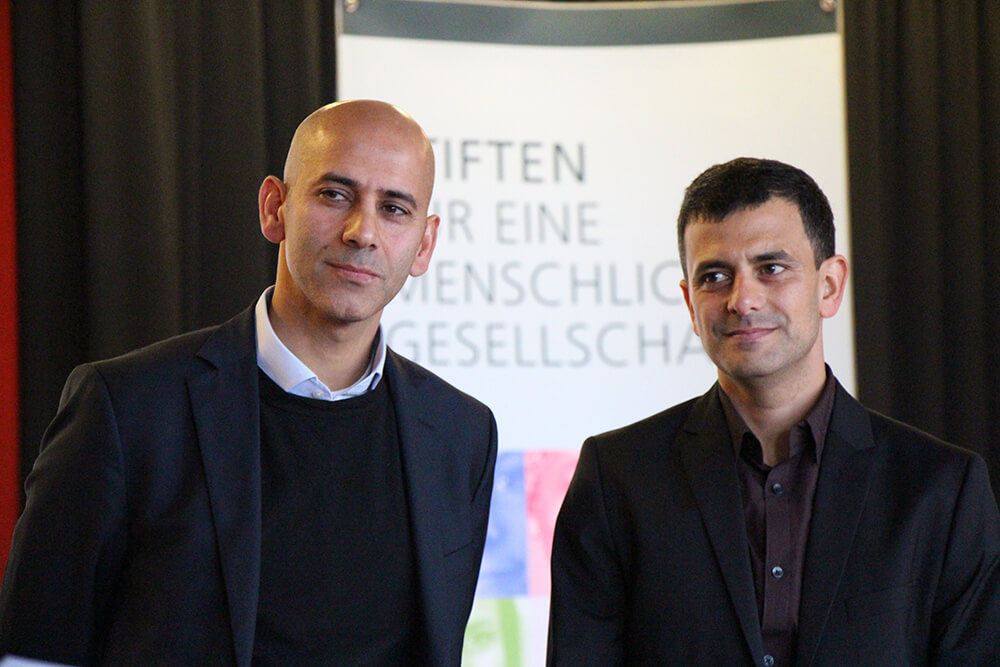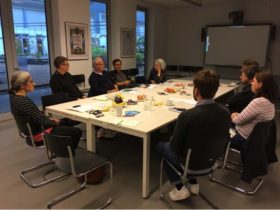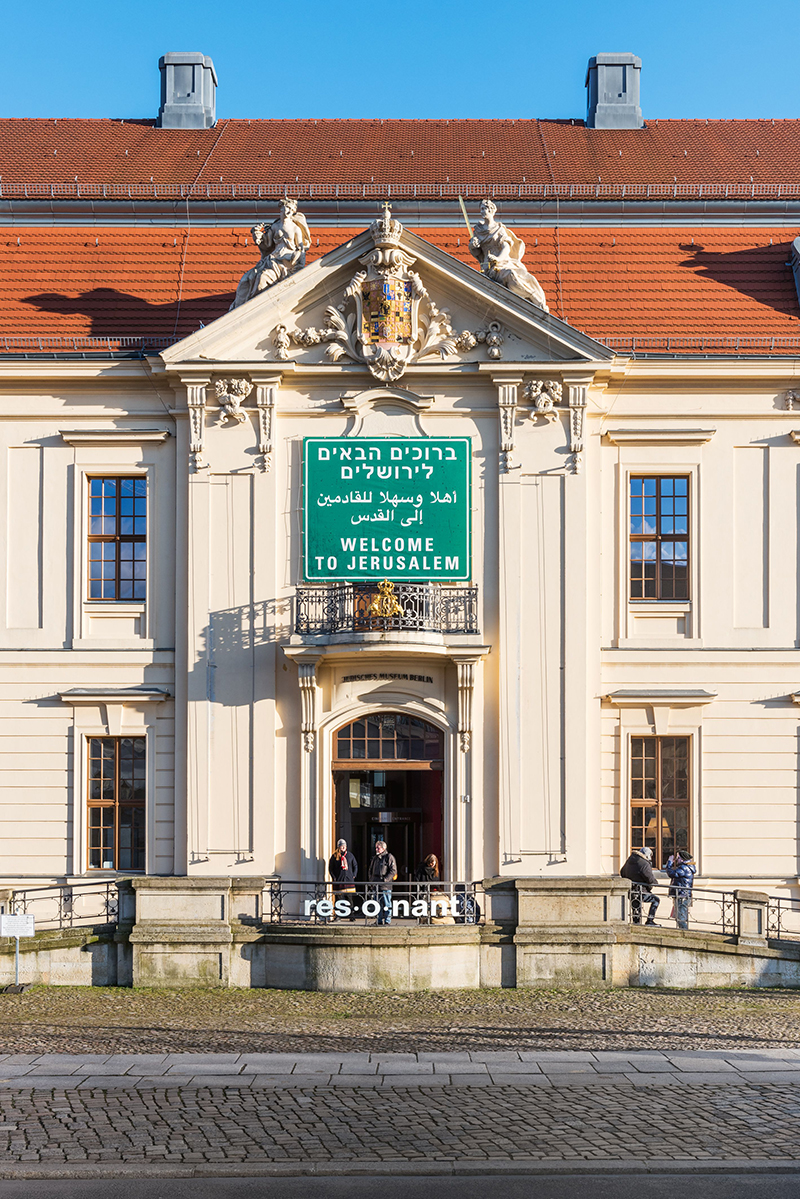An interview with Mohamed Ibrahim and Shemi Shabat about their tandem guided tour Jerusalem in Dialogue
Since April 2018, we’ve offered a tandem guided tour called Jerusalem in Dialogue (more about the tour) through our current temporary exhibition Welcome to Jerusalem (more about the exhibition). On each tour, two guides with their own personal relationships to Jerusalem speak from different perspectives about the city and the exhibition, which runs until 30 April 2019.
The format of a tandem tour emerged from a museum-guide training session (more about the training) that we conducted together with the Hochschule für Technik und Wirtschaft Berlin (HTW), a university of applied sciences. The German-Palestinian Mohamed Ibrahim and the Israeli Shemi Shabat contributed to its development and now oversee it together.

Mohamed Ibrahim and Shemi Shabat at the Flechtheim Prize ceremony of the Humanist Association of Germany (Humanistischen Verbands Deutschland) and the Humanist Foundation (Humanismus Stiftung); Humanistischer Verband Berlin-Brandenburg KdöR
Andy Simanowitz spoke to the two about the training, the concept of the tandem tour, and their relationship to Jerusalem.
Andy Simanowitz: To begin with, could you introduce yourselves and your work a bit?
Shemi Shabat: I’m Shemi. I was born and raised in Tel Aviv and I came to Berlin 11 years ago. At that time, a colleague asked me what I would think of developing workshops on the Palestine/Israel Middle-East conflict together with a Palestinian. At this point, we’ve been doing it for 10 years, going together to schools as a German-Palestinian and an Israeli to talk with students about the Middle East conflict. It’s now my second source of income; I’m also a consultant for the antidiscrimination network of the Turkish Federation in Berlin-Brandenburg.
Mohamed Ibrahim: I’m Mohamed, a German-Palestinian who has been living in Berlin for over 40 years. I was born in a refugee camp in Lebanon and I grew up in West Berlin. I studied politics here with a focus on international relations. My regional focus was the MENA region and the Middle-East conflict. My main occupation is development work at a federal implementing organization. As Shemi said, I’ve been doing these trainings with him for over 10 years.
→ continue reading
A conference on anti-Semitism-critical adult education
My W. Michael Blumenthal Fellowship at the Jewish Museum Berlin on the topic Didactics of the Middle East Conflict ended in the beautiful month of May. During the past seventeen months, I have been intensively engaged with continuing education on this politically contentious and very emotionally charged topic, as well as with the question of what we as teachers of social studies or educators working outside of school systems can or should not do, in order to best approach the topic of the Near-East conflict with students (more at: www.jmberlin.de/fellow-rosa-fava-and-her-research).

Discussion of the participants; photo: Berivan Köroğlu
In retrospect, one of the highlights of the conference, which I organized in early April 2018 in order to bring together educators focusing on the Middle East conflict and Anti-Semitism with museum employees working in the areas of education and the Academy programs. Since the first conference in September 2017, the parameters had changed somewhat, since the opening of the Welcome to Jerusalem exhibition made the Middle East conflict an (even bigger) presence at the Jewish Museum. → continue reading
On the difficulties the organizers of the “Welcome to Jerusalem” exhibition encountered doing justice to the ideal of justice

The much-discussed sign outside the museum, Jewish Museum Berlin, photo: Jule Roehr
In the Islamic tradition and in the Koran itself, the biblical story of David and Uriah is told in a metaphorical form that differs from the version in the Bible (Koran: Sura 38/21–25): two brothers come to King David and ask him to settle a dispute between them. One of them describes the situation. He tells David that his brother has 99 ewes, but he himself only has one. Now his brother was pressuring him to give him his only ewe. Directly after this brief depiction, David passes his judgment: the one brother’s desire to add the one ewe to his 99 was an injustice to the other brother. The judgment could have been the end of the story, had David not suddenly realized that his decision was unjust. He regretted it deeply. Many Muslim commentators have discussed the sudden turn in the story. One explanation for why the judgment is unjust despite the clarity of the situation is that David made his decision after hearing only one side. In this interpretation, the moral of the story is that in conflicts or disputes, both sides must be allowed to present their perspectives and arguments. → continue reading


